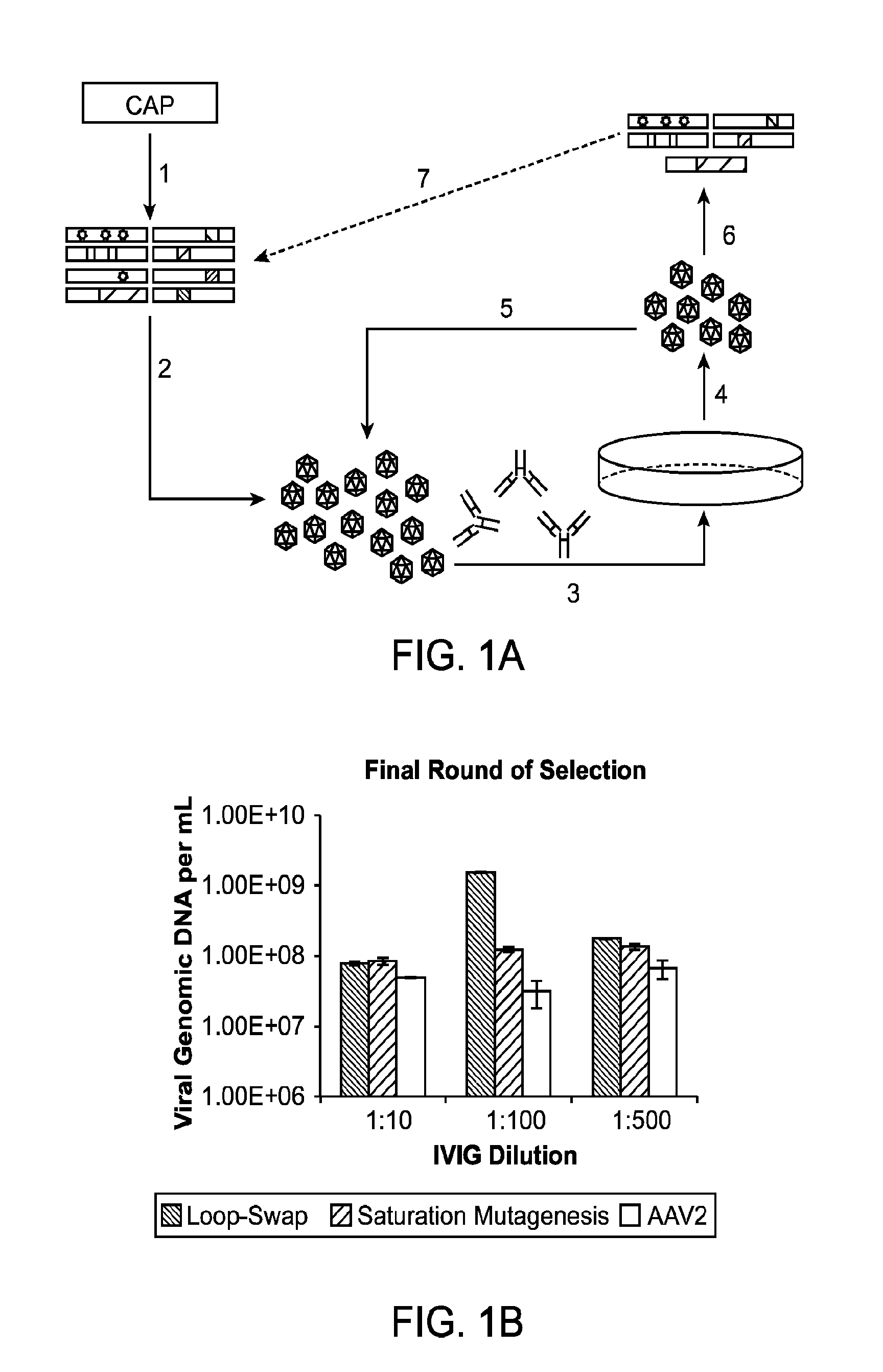Adeno-associated virus variants and methods of use thereof
a technology of adenovirus and variants, applied in the direction of viruses, non-active genetic ingredients, directed macromolecular evolution, etc., can solve the problems of reducing the efficacy impede the broader implementation of aav gene therapy, and low transduction, so as to increase the resistance to human aav neutralizing antibodies
- Summary
- Abstract
- Description
- Claims
- Application Information
AI Technical Summary
Benefits of technology
Problems solved by technology
Method used
Image
Examples
example 1
[0192]Adeno-associated virus (AAV) gene therapy vectors have demonstrated considerable promise in several clinical trials to date. However, circulating anti-AAV antibodies, resulting from childhood exposure or prior administration of an AAV vector, have prevented the implementation of AAV gene therapy for many potential patients. We have isolated novel AAV variants that are capable of enhanced anti-AAV antibody evasion, both in vitro and in vivo. The stringent pressure resulting from selections using low and high potency human sera pools and human IVIG evolved AAV variants capable of evasion of antibody neutralization from individual human sera, human IVIG, and mouse sera, the most broadly evasive variants to date.
Materials and Methods
Cell Lines
[0193]Cell lines were cultured at 37° C. and 5% CO2, and unless otherwise mentioned, were obtained from the American Type Culture Collection (Manassas, Va.). HEK293T, HeLa, and HT1080 cells were cultured in Dulbecco's modified Eagle's medium ...
PUM
| Property | Measurement | Unit |
|---|---|---|
| Fraction | aaaaa | aaaaa |
| Fraction | aaaaa | aaaaa |
| Electrical resistance | aaaaa | aaaaa |
Abstract
Description
Claims
Application Information
 Login to View More
Login to View More - R&D
- Intellectual Property
- Life Sciences
- Materials
- Tech Scout
- Unparalleled Data Quality
- Higher Quality Content
- 60% Fewer Hallucinations
Browse by: Latest US Patents, China's latest patents, Technical Efficacy Thesaurus, Application Domain, Technology Topic, Popular Technical Reports.
© 2025 PatSnap. All rights reserved.Legal|Privacy policy|Modern Slavery Act Transparency Statement|Sitemap|About US| Contact US: help@patsnap.com



